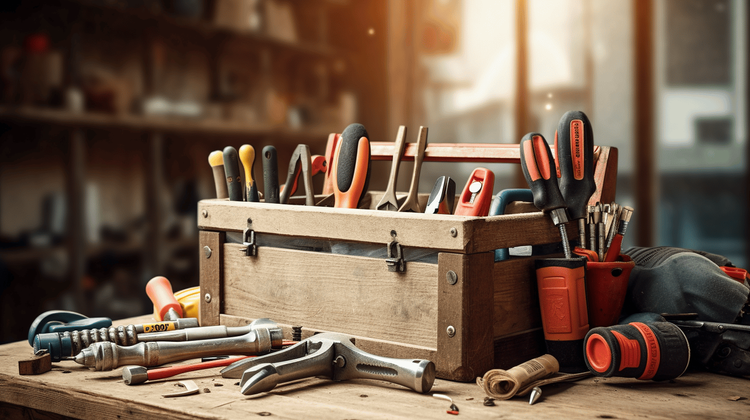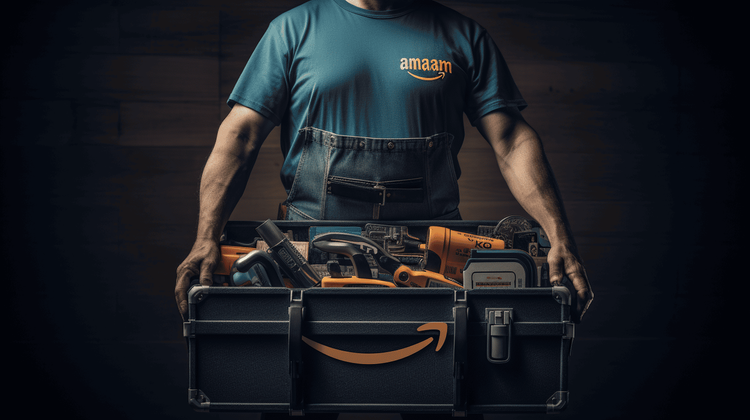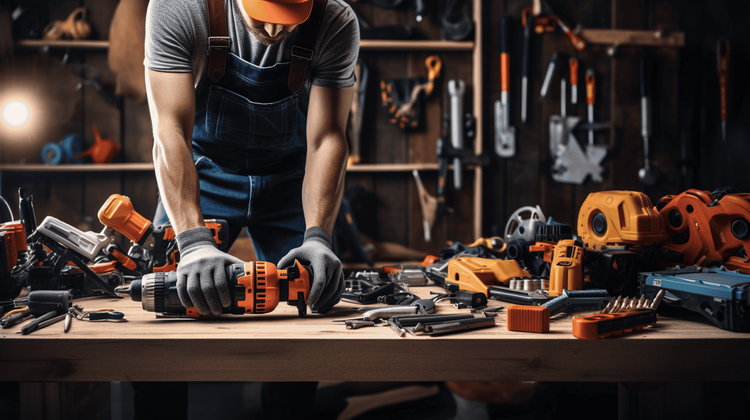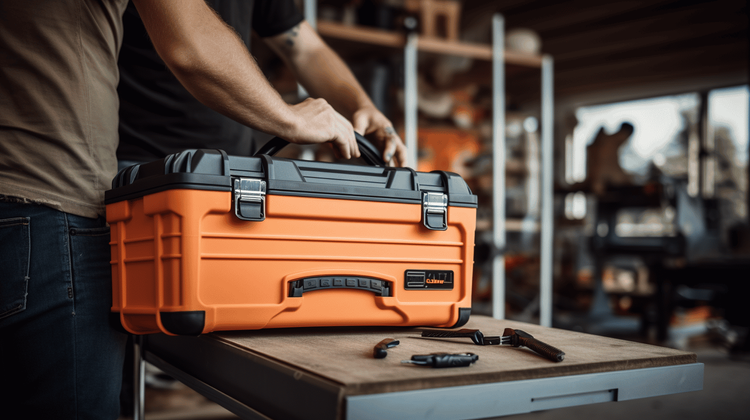Mastering DIY: Economical Tools to Boost Your Projects in 2024
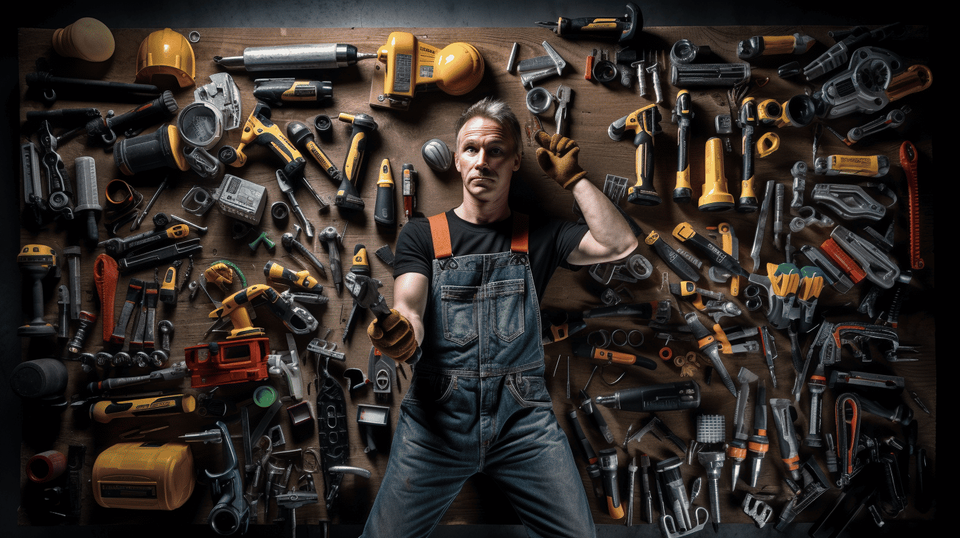
Welcome, fellow do-it-yourself enthusiast! Isn't it thrilling to build, repair, or install something with your own hands? The sense of achievement you get when you see your project come to life, just the way you planned is incomparable. 🔨🏡
In this blog post, we're taking a deep dive into the world of DIY. More importantly, we're going to explore the economical tools that can help turbocharge your DIY projects in 2024. We've got a lot to cover, including insider tips on balancing quality and cost, advice on keeping your tools in perfect working order, and a sneak peek into the anticipated tool innovations in 2024.
Whether you're a DIY maven or just dipping your toes into the sandbox, this article is for you. 👩🔧💡 So grab your safety goggles and get comfortable – it's time to level up your DIY game!
Understanding DIY & Its Importance
Do-it-Yourself, more lovingly known as DIY, has become the heart and soul of many homeowners, hobbyists, and thrifty individuals out there. But what does it really mean, and why has it garnered such popularity and significance in our contemporary world? Let's dive into the whimsical world of DIY and discover how it adds a sparkle of creativity in our everyday lives!
Definition of DIY
DIY, an acronym for 'Do it Yourself', is a concept that encourages individuals 💪 to take up tasks, which are traditionally performed by experts or professionals, on their own. From home 🏠 improvements and decorations to fixing broken appliances and creating nifty gadgets, DIY encompasses a vast array of activities that promote autonomy, resourcefulness, and ingenuity.
In the realm of DIY, setbacks aren't failures 🚫 but simply a part of the journey, a stepping stone to progress. Each challenge faced is an opportunity to learn and grow, making DIY more than just a process - it's an experience, an adventure even 🎢!
Benefits of DIY
Why tug on your boots and dive headfirst into the world of DIY, you may ask? Well, there is truly a myriad of reasons! Here are some of the primary benefits of undertaking DIY projects 👇:
- Savings, savings, and more savings: Engaging in DIY activities can significantly cut down on costs. By opting to 'do it yourself', you can save a considerable amount that would otherwise go to professional services.
- Enhanced Skills: Every DIY project is a chance to learn a new skill or hone an existing one. Whether you're fixing a leaky faucet 👷♀️ or sewing your own dress 👗, the knowledge you gain is priceless.
- Creativity and Customisation: DIY allows you to meet your exact needs and preferences, be it customizing your living room decor or creating your own unique piece of furniture. It's an opportunity to let your imagination run wild and create something truly one-of-a-kind.
- Sustainability: Many DIY projects feature recycling or upcycling, making it an environmentally friendly option. It helps reduce waste by reusing and repurposing old items.
- Personal fulfillment and confidence: There's a deep sense of satisfaction in creating or fixing something with your own two hands. It can boost self-esteem and foster a 'can-do' attitude 💪 that can carry over into other areas of life.
In essence, DIY is a manifestation of creativity, a symbol of empowerment, and a tool for economic efficiency. It takes on a life of its own and acts as a beacon of resourcefulness and resilience. So, the next time you're faced with a broken chair or an empty wall, why not view it as an opportunity for a DIY project? You may surprise yourself with what you're capable of!
(And remember, every expert was once a beginner! 😉) 🛠️
Overview of DIY Tools
There’s a saying that goes, "the right tool for the right job", and when it comes to DIY projects, this couldn't be more accurate. The world of DIY is expansive. It can range from simple tasks like hanging a picture frame, to more complex undertakings like building wooden furniture. The one thing that all these projects have in common? Tools. And not just any tools – the right ones. To achieve the desired results, you'll need a basic understanding of the tools involved. Let’s dive into some of the essential DIY tools that ought to be in your toolkit. 🛠️
Screwdriver sets
These are the bread and butter of any DIY toolkit. Essentially, there are two main types: the flathead and the Phillips. Flatheads have a single slot, while Phillips have a cross shape. Why do you need both? Well, different screws require different types of screwdrivers. Investing in a decent-quality set secures you for most fixtures and fittings you might run into.
Pliers
Ever tried pulling a nail or twisting a wire with your bare hands? Not the best idea. Pliers are wonderful grippy tools designed to do such tasks effortlessly and more. Depending on your needs, you might want to look into long-nose pliers for tight spaces or locking pliers for a firmer grip.
Hammer
Straightforward and multifaceted. A good hammer does not only assist in driving nails into different materials but also removes them if there's a mistake. A claw hammer doubles as a mini crowbar, which can prove incredibly handy in many situations.
Level
Straight lines can be surprisingly tricky to achieve. This is where a level comes in. It ensures everything you mount on the walls or assemble aligns perfectly square and plumb. After all, no one wants a wonky shelf.
Tape measure
Measure twice, cut once. This DIY mantra emphasizes the importance of accurate measurements. A tape measure enables you to take precise dimensions. An essential tool when your project involves cutting materials to specific sizes.
Drill
Last, but definitely not the least, the drill. Possibly the king of all DIY tools, it is used to make holes in various materials or to fasten materials together. A cordless drill is advisable for flexibility and ease of use.
Remember, DIY is about patience, learning, and the satisfaction of creating something yourself. With a firm grasp of these basic tools and what they can do, you're well on your way to taking your DIY projects to the next level. Happy DIYing! 🎉
Choosing Economical Tools for DIY Projects
The quest to find the perfect blend of affordability and quality in DIY tools can often feel like an impossible balancing act. But, there's no need to worry. You're not alone in this predicament, and we're here to help you navigate the DIY market with ease. Let's dive into how you can choose economical tools for your DIY projects, without compromising on the quality or functionality of your toolkit. 🧰🔨
Balancing Quality and Cost
When shopping for DIY tools, it's easy to fall into the trap of assuming that more expensive equals better quality. However, that's not always the case. Smart shopping is about striking a balance: finding tools made with durable materials that are also priced within your budget.
Some tips to help you balance quality and cost include:
- Looking for tools from reputable brands known for both value and durability.
- Considering all-in-one kits or multipurpose tools which could save you the cost of buying individual items.
- Avoiding unnecessary bells and whistles that often drive up the price without influencing performance.
Finding Economical Sources
Once you've determined what you need, the next step is figuring out where to buy your DIY tools. There's a world of economical sources out there, you just need to know where to look.
Consider these options:
- Second-hand tool shops or online markets often offer lightly-used tools that are in great condition for a fraction of the cost.
- Hardware stores often have sales, especially during holiday seasons.
- Online retailers sometimes offer exclusive deals you won't find in physical stores.
Comparisons and Considerations
Before making a purchase, do some comparison shopping. Check different websites, track prices over time, and read customer reviews. Weigh in factors such as warranty, materials, and brand reputation alongside the cost.
In addition, you should pay attention to:
- Longevity and expected lifespan of the tool.
- User-friendly features, such as easy-grip handles or adjustable speeds.
- Positive reviews from other DIY enthusiasts using these tools for similar projects.
By following these guidelines, you can sift through the glut of DIY tools on the market and find economical options that don't skimp on performance. So next time you're embarking on a DIY project, keep these tips in mind to ensure your toolbox is both high-quality and affordable. Happy crafting! 🙌💪
Boosting Your DIY Projects with the Right Tools
If you're an ardent DIY enthusiast, there’s nothing more rewarding than embarking on a project armed with the right tools and ample knowledge. 🌟 Having the correct tools for your DIY projects not only ensures quality but also enhances your safety. This piece will give you some insightful tips on tool maintenance, maximizing tool capabilities, and vital safety precautions. So let's start with tool maintenance, shall we?
Tool Maintenance
Picture this: halfway through your project, your saw gives up or your drill machine falters. Frustrating, right? Tools, like all other gadgets, require proper upkeep to perform effectively for a long duration. Here’s how you can ensure they last:
- Regular Cleaning: Clear all dust, grime, and residue after use. Over time, these elements can affect tool performance.
- Lubrication: Certain tools demand regular oiling to function smoothly, minimizing wear and tear.
- Regular Inspection: Regularly inspect your tools for any signs of damage or wear. Promptly address any detected issues to prevent further deterioration.
Maximizing Tool Capabilities
The secret to getting the most from your tools lies not just in maintenance, but also in knowing their full potential. A single tool can often be used for various tasks—we just need to unlock its capabilities! Let’s take a look at how:
- Know Your Tools: Read the instruction manual thoroughly. Understanding the full functionality of your tools can surprisingly extend their use.
- Multitasking Tools: Invest in tools that offer multiple usages. With the correct accessory attachments, an ordinary drill machine could double as a sander or grinder.
Safety Precautions
Just as a superhero never goes into battle without their shield, neither should you plunge into a DIY project without taking proper precautions! Adhering to safety guidelines should be your utmost priority.
- Protective Gear: Always utilize safety goggles, gloves, and ear protection. A dust mask is essential when dealing with materials that generate dust or toxic fumes.
- Electrical Safety: Double-check the power settings on your electric tools. Handle them with dry hands and keep away from water.
Remember, a well-maintained toolset not only lengthens the lifespan of your tools but greatly bolsters your ability to complete your DIY projects efficiently and safely. So roll up your sleeves, grab those tools, and let's start DIY-ing, but remember to put safety first! 💪🔩🔨
Anticipated Tool Innovations in 2024
Who doesn't love a sneak peek into the future, especially when it involves our indispensable everyday tools? As we catapult into 2024, tools aren't staying behind in the race; we're about to witness phenomenal innovations in this sector!
Impacts of Technology on DIY Tools
The world of Do-It-Yourself (DIY) has been significantly disrupted by the influence of technology. Who could've thought, a decade ago, that there'd be a day when tools would seamlessly operate at the flick of a finger, with Wi-Fi connectivity? Technology has democratised DIY tools and here's how:
- Automation: It’s no surprise that automation has infiltrated DIY tools too. Think cordless drills with precise control, robotic lawnmowers for that weekend trim, or paint sprayers offering the perfect coat every single time. Automation is the watchword in 2024's tools sector. 🤖
- Smart Tools: Picture this: A toolbox that communicates with each tool, keeps a check on battery levels, maintains a repair log, and even orders replacements when needed. Sounds revolutionary, right? That’s smart technology for you. 🧰💡
- Adaptive Functionality: Traditional, one-dimensional tools are a thing of the past. Let's welcome adaptive tools capable of multiple functions, reducing expenditure and storage space while providing maximum efficiency. Multifunctional tools are the future! 🛠️🔄
Sustainable Tools Trends
With the escalating concern for the environment, the tool industry is also responding to the call for sustainability. After all, tools shouldn't just be about convenience, but about caring for Mother Earth as well.
Here's a preview of the eco-friendly trends in tools that are anticipated to run the show in 2024:
- Biodegradable Materials: Picture a world where tools, once outlived their usefulness, decompose naturally without harming the environment. The use of biodegradable materials, like wood and bamboo, can make this possible.
- Energy Efficient: Tools guzzling up electricity are no longer preferable. The market is steadily moving towards tools that consume minimal energy, with solar-powered tools being the front-runner. ☀️🔋
- Recyclable Tools: The concept of recycling is difficult to ignore in the age of sustainability. Tools that are designed to be reprocessed and reused are expected to dominate the industry scenario in 2024.
Just as the clock doesn't stop ticking, the sphere of tool innovations doesn't cease to evolve. As we embrace 2024, DIY enthusiasts and professionals alike are poised for a revolutionary and eco-friendly tool experience. Let the tools of the future roll in!
Conclusion
Engaging in DIY projects not only fosters creativity and independence, but it's also a fun and economical method to enhance your living environment. Picking the right tools can make a significant difference in your work efficiency and overall project success. Remember, the quality of your tools is often reflected in the quality of your work.
To make your DIY experience even more convenient, consider products like the Bit Holder Keychain from Ultra Handy. Its purpose is to help organize your screwdriver bits, making them readily available and easy to find. A well-organized workspace can drastically improve your productivity levels, and this handy device does just that!
Moreover, Ultra Handy is dedicated to aiding active people to stay healthy while pursuing their passion for DIY projects. Consider including their range of high-quality supplements into your routine. Taking care of your physical health should always be a top priority, even when indulging in your fun DIY projects.
Let 2024 be the year you fully embrace the DIY lifestyle, keep the necessary precautions in mind, employ the best tools for your needs, and seize the thrill of creating something yourself. Who knows? You might just find that the blend of creativity, independence and initiative spells out excitement in a way you never expected. Here's to reaping the benefits of your handiwork with a smile. Happy DIY-ing!
For more insights, visit Ultra Handy and explore our vast array of products tailored to meet the needs of every DIY enthusiast.
Frequently Asked Questions
- What are some economical tools for DIY projects in 2024?Some economical tools for DIY projects in 2024 include: 1. Cordless drill, 2. Multitool, 3. Digital tape measure, 4. Portable workbench, and 5. LED work light.
- Why should I invest in economical tools for my DIY projects?Investing in economical tools for your DIY projects is advantageous as it helps save money, enables you to take on more projects, enhances efficiency and precision, and empowers you to complete projects at your own pace.
- Are economical tools as durable and reliable as expensive ones?While economical tools may not always match the durability and reliability of expensive ones, there are many affordable options available today that offer good quality and performance. It's important to read reviews, compare features, and choose trusted brands to ensure satisfactory results.
- Where can I purchase economical DIY tools?You can purchase economical DIY tools from various places, such as online marketplaces like Amazon or eBay, hardware stores, local thrift shops, and garage sales. Additionally, keep an eye out for discounted deals and promotions.
- What are some essential safety precautions when using DIY tools?When using DIY tools, it's important to follow safety precautions such as wearing appropriate protective gear, using tools as instructed, keeping work areas clutter-free, disconnecting power sources when not in use, and seeking professional help for complex projects.
